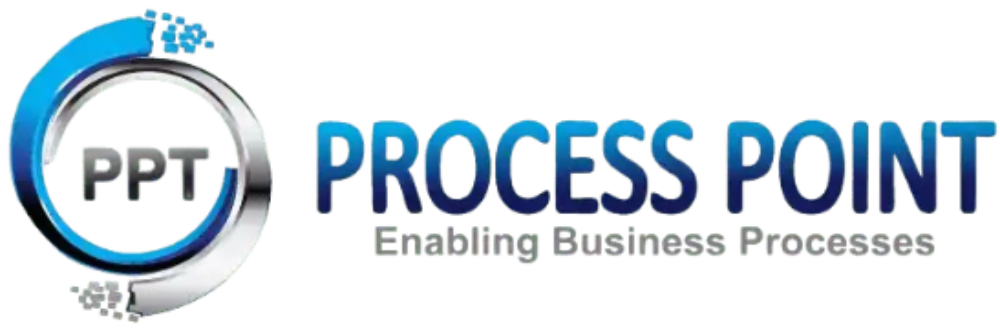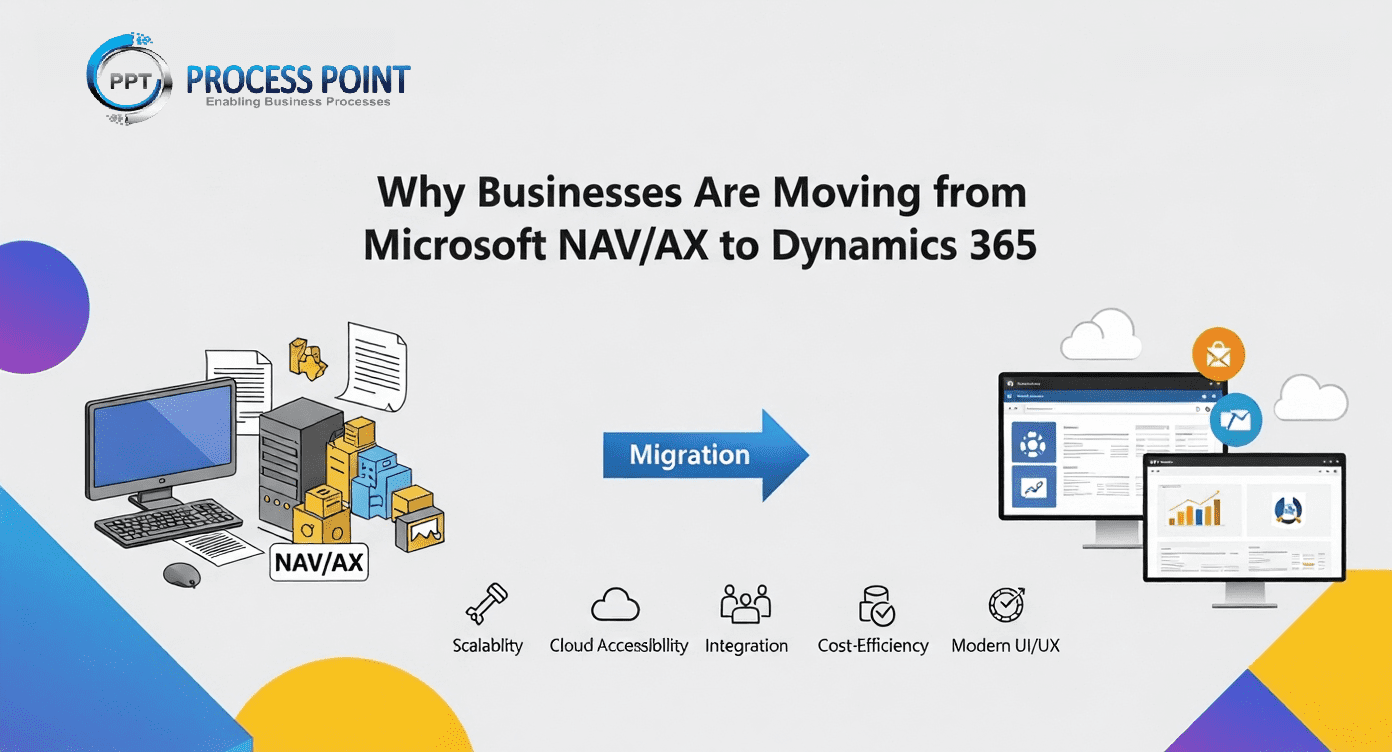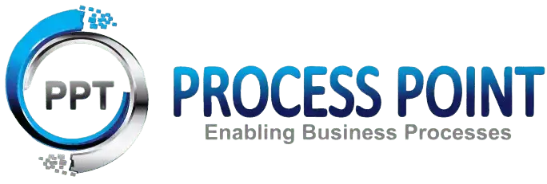Dynamics 365 vs Legacy ERP: A Strategic Comparison for Today’s Businesses
- Published on : June 23, 2025
Introduction
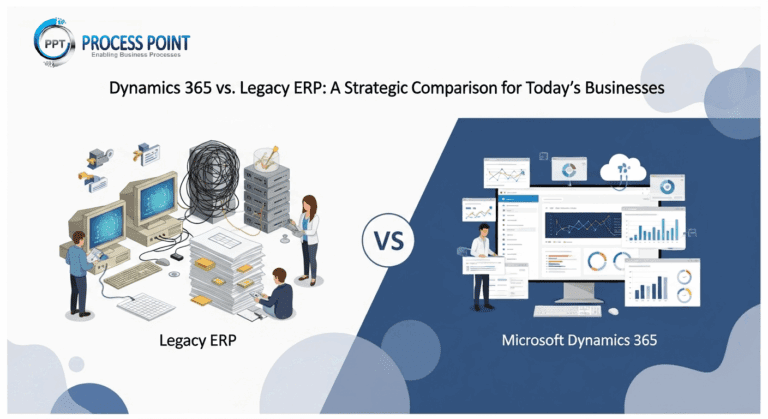
What Is Legacy ERP?
Legacy ERP systems are traditional software solutions installed on local servers or private data centers. They have been the standard for many decades, providing companies with control over their data and processes. Common legacy ERP vendors include Oracle EBS, SAP ECC, and older versions of Microsoft Dynamics.
While legacy ERPs have been reliable workhorses, they come with challenges such as complex infrastructure requirements, lengthy upgrade cycles, and high maintenance costs. For example, an upgrade could take months or even years and require significant downtime, impacting business continuity.
Many legacy ERP systems were designed in an era when cloud computing was not mainstream, so they often lack flexibility in integrating modern applications or mobile accessibility.
What Is Microsoft Dynamics 365?
Microsoft Dynamics 365 is a suite of cloud-based business applications combining ERP and CRM capabilities on a unified platform. Unlike traditional ERP systems, Dynamics 365 offers modularity, allowing businesses to select specific apps such as Finance, Supply Chain, Sales, or Customer Service based on their needs.
The cloud foundation means that Dynamics 365 benefits from Microsoft’s global data centers, offering high availability, scalability, and security standards. The platform leverages artificial intelligence, machine learning, and data analytics to provide predictive insights that help businesses optimize operations.
Moreover, Dynamics 365 seamlessly connects with Microsoft Power Platform (Power BI, Power Automate, Power Apps), allowing users to create custom workflows and reports without heavy IT intervention.
Key Differences Between Dynamics 365 and Legacy ERP
- Deployment & Accessibility
Legacy ERP: Installed on-premises, accessible primarily within corporate networks. Remote access often requires VPNs and additional security layers.
Dynamics 365: Fully cloud-hosted, accessible anywhere via a web browser or mobile app, enabling a distributed workforce and supporting hybrid or remote working models.
- Scalability
Legacy ERP: Scaling requires hardware upgrades and can involve significant costs and complexity.
Dynamics 365: Cloud-native, you can add users or modules quickly, scaling up or down with business demands without investing in physical infrastructure.
- Integration Capabilities
Legacy ERP: Integration with modern SaaS apps is often cumbersome and expensive, relying on middleware or custom code.
Dynamics 365: Built to integrate with a vast ecosystem of Microsoft products and third-party applications through APIs, connectors, and Microsoft Flow.
- Maintenance and Upgrades
Legacy ERP: Maintenance is resource-intensive, and upgrades can disrupt business operations.
Dynamics 365: Automatic updates push new features and security patches regularly, minimizing downtime.
- Cost Structure
Legacy ERP: Large upfront capital expenditure, plus ongoing costs for servers, software licenses, and IT staff.
Dynamics 365: Subscription-based pricing offers predictable operational expenses, with options to pay monthly or annually.
Additional Benefits of Dynamics 365
- Agility and Innovation
With Dynamics 365, companies can experiment with new features, pilot programs, or AI-driven automation with less risk and faster time-to-value. This adaptability is critical in industries with rapidly changing requirements.
- User Experience and Adoption
Familiar Microsoft interfaces reduce the learning curve, increasing employee satisfaction and adoption rates.
- Security and Compliance
Microsoft invests heavily in cloud security certifications and compliance with standards like GDPR, HIPAA, and ISO 27001, which can be a significant advantage over legacy systems lacking modern security features.
- Business Continuity and Disaster Recovery
Cloud solutions like Dynamics 365 provide built-in disaster recovery and backup capabilities, which might require expensive and complex setups in on-premises environments.
Common Challenges When Migrating from Legacy ERP to Dynamics 365
- Data Migration Complexity
Moving data from legacy systems can be difficult due to format differences, data quality issues, and volume. Thorough data cleansing and mapping are critical.
- Change Management
Employees accustomed to legacy systems may resist change. Training and clear communication are essential for smooth adoption.
- Customization and Configuration
Legacy ERP systems often have extensive customizations; replicating or rethinking these in Dynamics 365 may require significant effort.
- Integration with Existing Systems
Some legacy integrations may not have direct counterparts in Dynamics 365, requiring new integration strategies.
When Might Legacy ERP Be a Better Fit?
- Highly Customized Industry-Specific Needs
Some industries have very specialized workflows deeply embedded in legacy systems that may be hard to replicate in modern ERPs.
- Data Sovereignty or Regulatory Requirements
If regulations require data to be stored on-premises or within specific jurisdictions that cloud providers cannot guarantee.
- Budget Constraints for Migration
For organizations unable to invest in migration costs or temporary dual systems during transition.
- Stable Business Processes
Companies with stable, mature processes that don’t require frequent updates or innovations might prefer to stay with legacy systems.
How to Choose the Right ERP Solution
- Assess Your Business Goals
Are you looking for innovation, flexibility, and growth, or do you prioritize stability and control?
- Evaluate IT Resources
Do you have an in-house team to maintain on-premise systems, or would a cloud provider’s managed services relieve your burden?
- Consider Total Cost of Ownership (TCO)
Look beyond upfront costs to include maintenance, upgrades, downtime, and training.
- Plan for Future Needs
Consider scalability, new technology adoption, and digital transformation plans.
Related Blogs
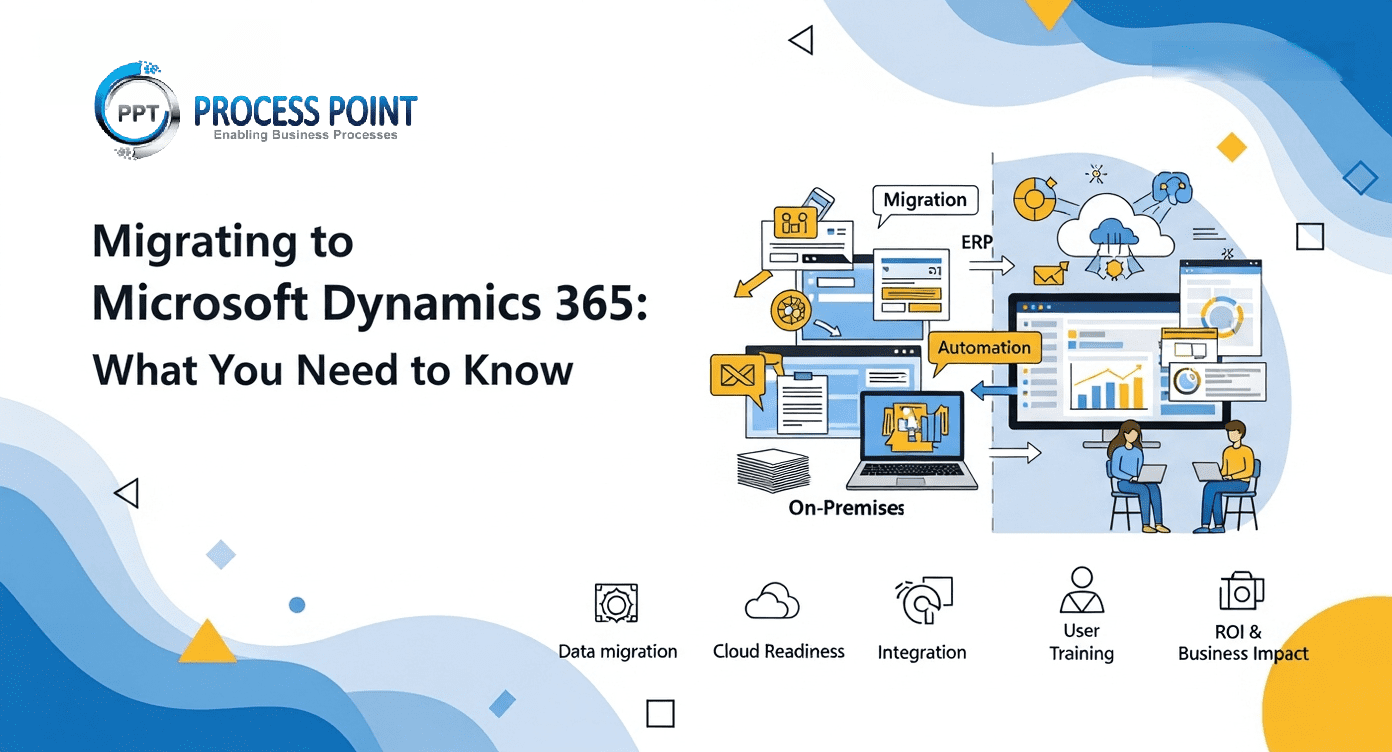
June 16, 2025
Migrating to Microsoft Dynamics 365: What You Need to Know
Transform your business with Dynamics 365—unify operations, boost customer experience, and explore benefits, challenges, and migration best practices.
